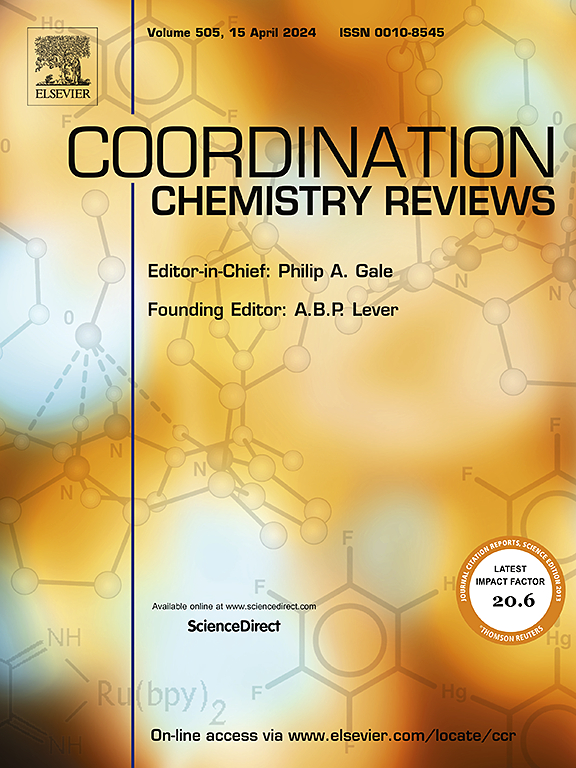Carboxylate embedded metal organic frameworks for potential applications in drug delivery and controlled release
IF 20.3
1区 化学
Q1 CHEMISTRY, INORGANIC & NUCLEAR
引用次数: 0
Abstract
Carboxylate-based metal-organic frameworks (CMOFs) has emerged as highly promising materials in medicinal applications, particularly in drug delivery and control release at the target, owing to their tunable pore structures and extensive surface areas. This review mainly focuses on the carboxylate MOFs as nano-carriers in drug delivery, highlighting their well-defined structures, ultra-high porosity, and versatile chemical functionalization. We summarize various strategies for functionalizing CMOFs with therapeutic agents, such as surface adsorption of drugs, pore encapsulation of drugs, and covalent binding of drugs with CMOFs. Additionally, the review highlights the methods of drug loading in CMOFs and explores their specific applications in drug delivery and sustained release. CMOFs are particularly notable for their ability to achieve stimuli-responsive release and co-delivery of drugs in combination of genes, which is especially useful in cancer treatment. Finally, the challenges in enhancing the efficiency of CMOFs in medicinal applications are discussed.

羧酸盐嵌入金属有机框架在药物传递和控释方面的潜在应用
基于羧酸盐的金属有机骨架(CMOFs)由于其可调节的孔隙结构和广泛的表面积,在药物递送和靶标控释方面具有很高的应用前景。本文主要综述了羧酸mof作为纳米药物载体的研究进展,重点介绍了其结构清晰、超高孔隙率和多种化学功能化特性。本文综述了利用治疗剂实现CMOFs功能化的各种策略,如药物的表面吸附、药物的孔包封以及药物与CMOFs的共价结合。此外,本文还重点介绍了CMOFs的载药方法,并探讨了其在药物传递和缓释方面的具体应用。CMOFs尤其值得注意的是它们能够实现刺激反应性释放和基因组合药物的共同递送,这在癌症治疗中特别有用。最后,讨论了提高CMOFs在医学应用中的效率所面临的挑战。
本文章由计算机程序翻译,如有差异,请以英文原文为准。
求助全文
约1分钟内获得全文
求助全文
来源期刊

Coordination Chemistry Reviews
化学-无机化学与核化学
CiteScore
34.30
自引率
5.30%
发文量
457
审稿时长
54 days
期刊介绍:
Coordination Chemistry Reviews offers rapid publication of review articles on current and significant topics in coordination chemistry, encompassing organometallic, supramolecular, theoretical, and bioinorganic chemistry. It also covers catalysis, materials chemistry, and metal-organic frameworks from a coordination chemistry perspective. Reviews summarize recent developments or discuss specific techniques, welcoming contributions from both established and emerging researchers.
The journal releases special issues on timely subjects, including those featuring contributions from specific regions or conferences. Occasional full-length book articles are also featured. Additionally, special volumes cover annual reviews of main group chemistry, transition metal group chemistry, and organometallic chemistry. These comprehensive reviews are vital resources for those engaged in coordination chemistry, further establishing Coordination Chemistry Reviews as a hub for insightful surveys in inorganic and physical inorganic chemistry.
 求助内容:
求助内容: 应助结果提醒方式:
应助结果提醒方式:


